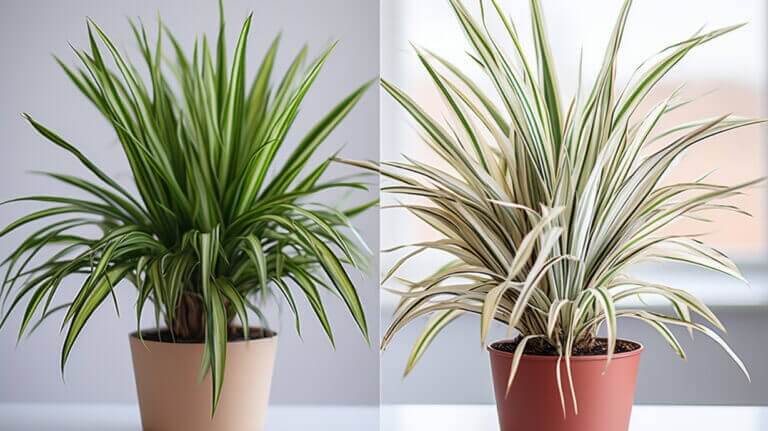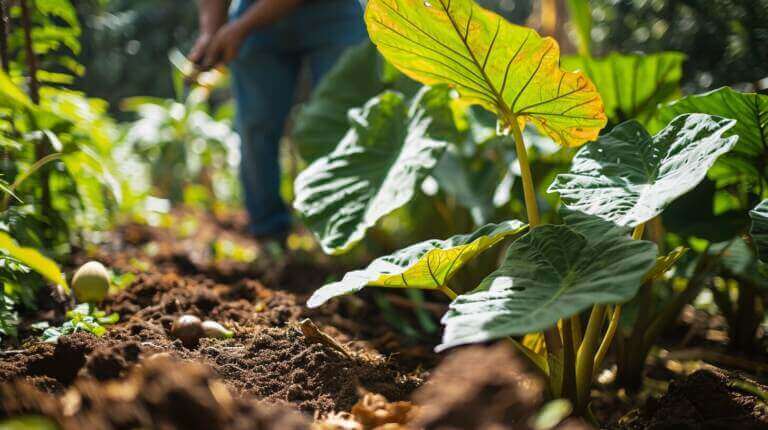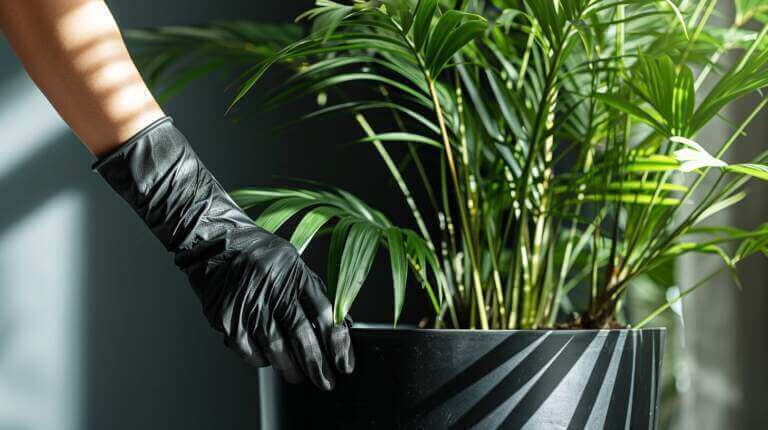Why Your Fiddle Leaf Fig Leaves Drooping: How to Fix Drooping Fiddle Leaf Fig Houseplant
If you notice your fiddle leaf fig drooping, you may be wondering why and how to fix it. There are several factors that can contribute to a drooping fiddle leaf fig, but with proper care and attention, you can help your plant recover and thrive again.
Key Takeaways:
- Dry soil and low humidity can cause fiddle leaf figs to droop.
- Stress from moving or repotting the plant can also lead to temporary drooping.
- Monitoring the soil volume and adjusting watering is crucial when making changes to the plant’s environment.
- Identifying the specific cause of drooping will help determine the appropriate action to take.
- Proper care and attention can help your fiddle leaf fig recover and thrive.
Common Reasons For Drooping Fiddle Leaf Fig Leaves(Ficus Lyrata )
If you’ve noticed your fiddle leaf fig leaves drooping, it’s important to understand the common causes behind this issue. By identifying the root cause, you can take appropriate steps to address the problem and help your plant thrive.
Weak Tissue in Young Growth
One possible cause of drooping fiddle leaf fig leaves is weak tissue in young, new growth. These leaves may appear droopy initially but will typically stiffen up over time. It’s important to give these new leaves some time to adjust and strengthen before assuming there is a more serious issue at hand.
Environmental Changes
Moving your fiddle leaf fig to a new room or exposing it to sudden temperature changes can also cause the leaves to droop. These changes can stress the plant, leading to temporary drooping. It’s important to provide a stable environment for your fiddle leaf fig and give it time to adjust to any new surroundings.
Improper Watering
Both underwatering and overwatering can cause fiddle leaf fig leaves to droop. Underwatering can lead to dry soil, while overwatering can result in waterlogged roots. It’s essential to find the right balance and water your plant appropriately to avoid moisture-related issues.
Root Shock or Fertilize Chemical Burn
If you’ve recently repotted your fiddle leaf fig or exposed it to harsh chemicals, such as fertilizers or pesticides, it may experience root shock or chemical burn. These conditions can cause the leaves to droop as the plant adjusts to its new environment. Avoid further manipulation of the plant and allow it time to recover.
How to Fix Fiddle Leaf Fig Drooping Leaves
If your fiddle leaf fig leaves are drooping, it’s important to identify the underlying cause and take appropriate action to revive your plant. Here are some targeted solutions based on different causes:
Underwatering:
If your fiddle leaf fig is drooping due to underwatering, adjust your watering schedule and provide sufficient moisture. Ensure that you water the plant thoroughly, allowing water to flow out of the drainage holes, and wait until the top inch of the soil is dry before watering again. You can also mist the leaves occasionally to increase humidity.
Overwatering:
If overwatering is the culprit, improve drainage by using well-draining soil and pots with drainage holes. Reduce the frequency of watering and allow the soil to dry out slightly between waterings. Consider using a moisture meter to accurately assess the moisture level of the soil.
Environmental Factors:
Environmental factors, such as lack of light or sudden temperature changes, can cause drooping leaves. Ensure that your fiddle leaf fig is placed in a well-lit area with bright, indirect sunlight. Avoid placing it near drafts or vents. Maintain a consistent temperature range of 60-75°F (15-24°C) to provide optimal conditions for your plant.
Root Shock or Chemical Burn:
If your fiddle leaf fig has recently been repotted or exposed to harsh chemicals, it may experience root shock or chemical burn, resulting in drooping leaves. Avoid further manipulation of the plant and allow it time to recover. Focus on providing proper care, including appropriate watering and light conditions, to support its healing process.
| Symptom | Cause | Solution |
|---|---|---|
| Drooping leaves | Underwatering | Adjust watering schedule, provide sufficient moisture |
| Drooping leaves | Overwatering | Improve drainage, reduce watering frequency |
| Drooping leaves | Lack of light or sudden temperature changes | Ensure proper lighting and temperature conditions |
| Drooping leaves | Root shock or chemical burn | Avoid further manipulation, provide proper care |
Why Your Fiddle Leaf Fig Leaves are Yellowing
If you’ve noticed that your fiddle leaf fig leaves are yellowing, several factors could be contributing to this issue. One common cause is a lack of light. Fiddle leaf figs require bright, indirect sunlight to thrive, so if your plant is not receiving enough light, the leaves may turn yellow.
Inadequate watering practices can also lead to yellowing leaves. Both underwatering and overwatering can cause stress to the plant and result in yellowing foliage. It’s essential to find the right balance and ensure that you are providing your fiddle leaf fig with appropriate moisture.
Nutrient deficiency is another possible reason for yellowing leaves. Fiddle leaf figs require regular fertilization to maintain their health. If the soil lacks essential nutrients, the leaves may start to turn yellow as a sign of nutrient deficiency.
To address the issue of yellowing leaves, it’s crucial to assess the specific conditions and care practices for your fiddle leaf fig. Ensure that your plant is receiving enough light, adjust your watering routine if necessary, and consider fertilizing the soil to provide the necessary nutrients. By addressing these factors, you can help your fiddle leaf fig regain its vibrant green color and promote overall plant health.
| Possible Causes of Yellowing Leaves | Solutions |
|---|---|
| Lack of light | Place your fiddle leaf fig in a bright, indirect sunlight location |
| Inadequate watering | Adjust your watering routine to provide appropriate moisture |
| Nutrient deficiency | Fertilize the soil regularly to provide essential nutrients |
Dealing with Brown Spots on Fiddle Leaf Fig Leaves
If you’ve noticed brown spots on your fiddle leaf fig leaves, it’s important to address the issue promptly to prevent further damage to your plant. Brown spots can be caused by various factors, including root rot, bacterial infections, dryness, pest damage, physical damage, and sunburn. By identifying the specific cause of the brown spots, you can take appropriate action to treat and prevent further damage.
One possible cause of brown spots is root rot. This occurs when the roots of your fiddle leaf fig are sitting in waterlogged soil, leading to fungal growth and damage to the roots. To address root rot, it’s important to ensure proper drainage by using well-draining soil and a pot with drainage holes. Additionally, make sure to water your plant only when the top inch of soil feels dry.
Another possible cause of brown spots is bacterial infections. If your fiddle leaf fig has been exposed to excess moisture or has damaged leaves, it may be susceptible to bacterial infections. To treat bacterial infections, you can remove affected leaves and apply a copper-based fungicide to prevent the spread of the infection.
| Cause of Brown Spots | Treatment |
|---|---|
| Root rot | – Ensure proper drainage – Use well-draining soil – Water only when top inch of soil is dry |
| Bacterial infections | – Remove affected leaves – Apply copper-based fungicide |
| Dryness | – Maintain regular watering – Monitor soil moisture |
| Pest damage | – Inspect plant for pests – Treat infestation accordingly |
| Physical damage | – Handle plant with care – Avoid rough handling |
| Sunburn | – Provide shade or filtered light – Protect plant from direct sunlight |
“Prevention is key when dealing with brown spots on fiddle leaf fig leaves. By providing proper care, regular inspections, and addressing any issues promptly, you can maintain the health and beauty of your fiddle leaf fig.”
Reasons for Lack of New Leaf Growth in Fiddle Leaf Fig
If you’ve noticed that your fiddle leaf fig is not growing new leaves, there may be several reasons behind this lack of growth. Identifying the cause is crucial in order to take appropriate action and promote the health of your plant.
One possible reason for the lack of new leaf growth is root bound. This occurs when the roots have outgrown the current pot’s space, leading to nutrient deficiencies and limited growth. To address this issue, consider repotting your fiddle leaf fig into a larger container with fresh soil, providing the roots with more space to grow.
Another common factor that can hinder new leaf growth is insufficient light. Fiddle leaf figs require plenty of bright, indirect sunlight to thrive and produce new leaves. If your plant is not receiving enough light, consider moving it to a brighter location or supplementing with artificial lighting.
Factors Contributing to Lack of New Leaf Growth in Fiddle Leaf Fig
1. Root Bound: Consider repotting your plant into a larger container with fresh soil to provide more space for root growth.
2. Insufficient Light: Ensure your fiddle leaf fig is receiving plenty of bright, indirect sunlight or supplement with artificial lighting.
3. Lack of Nutrients: Regularly fertilize your plant to provide the necessary nutrients for healthy leaf production.
FAQ
Why is my fiddle leaf fig tree leaves drooping?
If you notice your fiddle leaf fig drooping, it may be due to dry soil, low humidity, or stress from environmental changes. Adjusting your watering schedule, increasing humidity, and monitoring soil volume can help address the issue.
How do I determine if my fiddle leaf fig is overwatered?
Overwatered fiddle leaf figs may have limp and droopy leaves, yellowing or browning of lower leaves, and a waterlogged soil. Checking the soil moisture and allowing the plant to dry out between waterings can help prevent overwatering issues.
What are the common fiddle leaf fig problems associated with drooping leaves?
Drooping leaves on a fiddle leaf fig plant may indicate problems such as overwatering, root rot, lack of proper drainage, or environmental factors like low humidity. Addressing these issues promptly can improve the overall health of the plant.
How does humidity affect the health of my fiddle leaf fig plant?
Fiddle leaf figs thrive in environments with higher humidity levels. Low humidity can lead to drooping leaves and overall stress on the plant. Using a humidifier or misting the plant can help increase humidity and promote healthier foliage.
How can I perk back the leaves of my fiddle leaf fig?
To perk back the leaves of a fiddle leaf fig, ensure that the plant is receiving proper watering, adequate sunlight, and optimal humidity levels. Pruning any damaged leaves and addressing any underlying issues can help the plant regain its vigor







